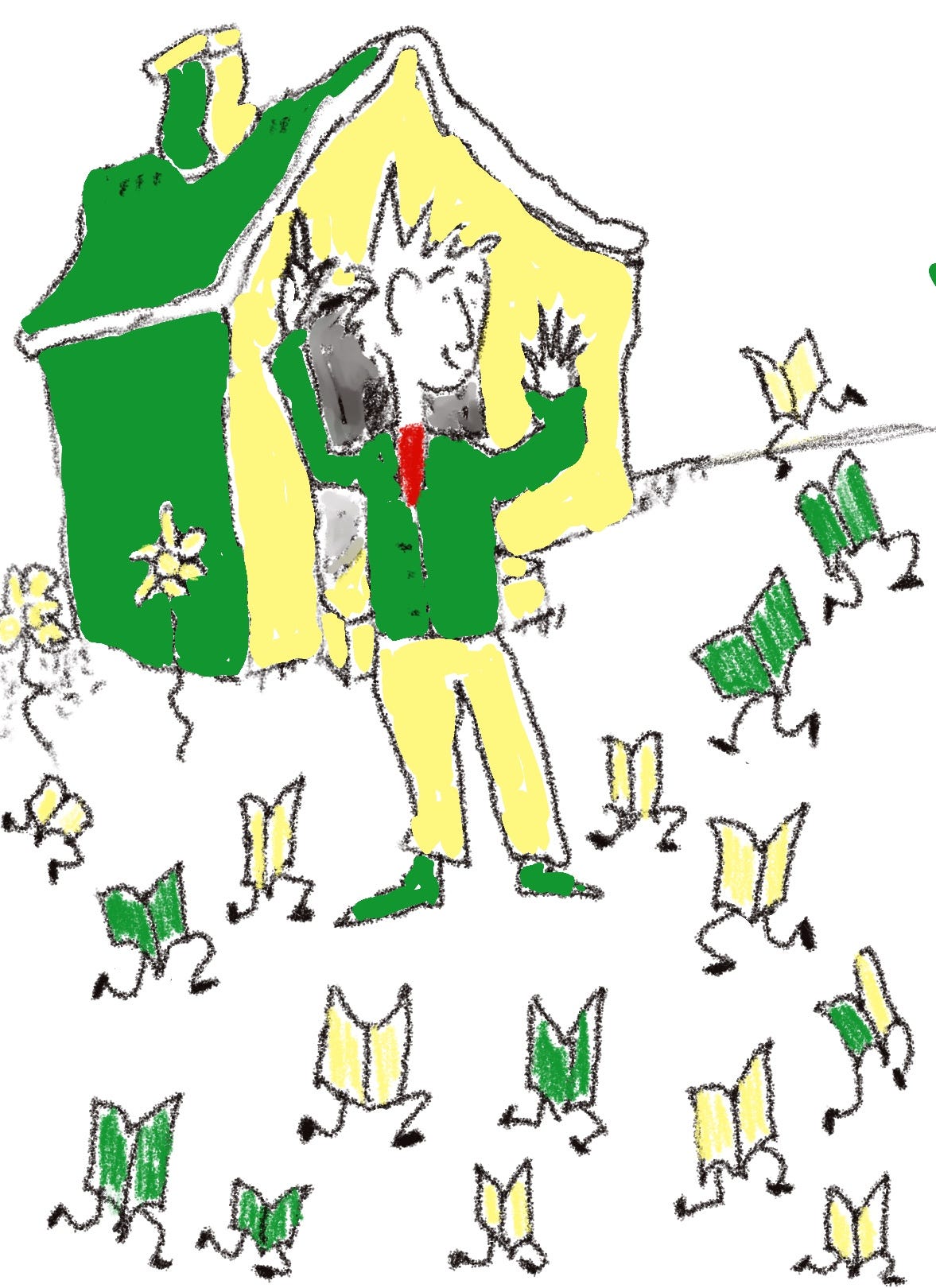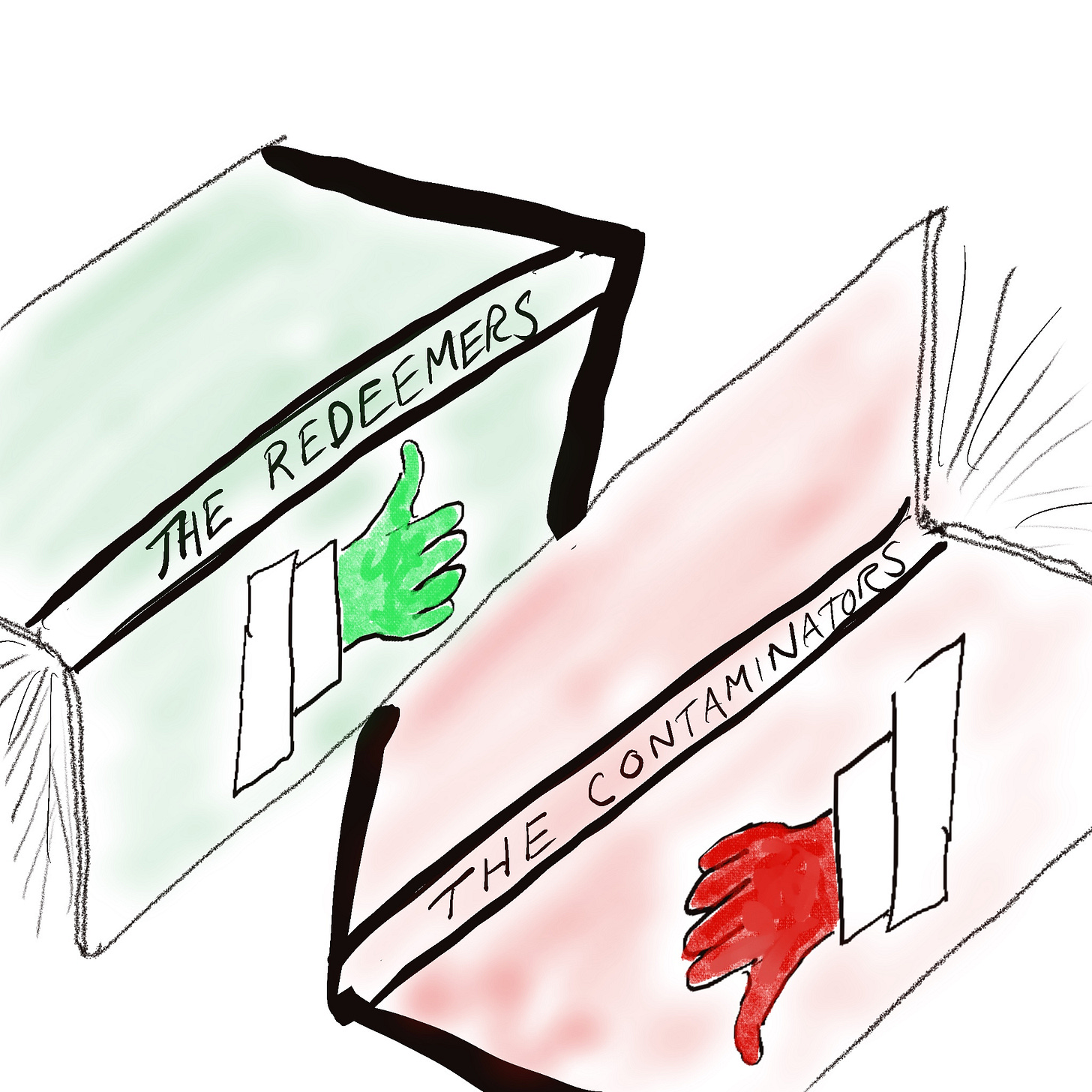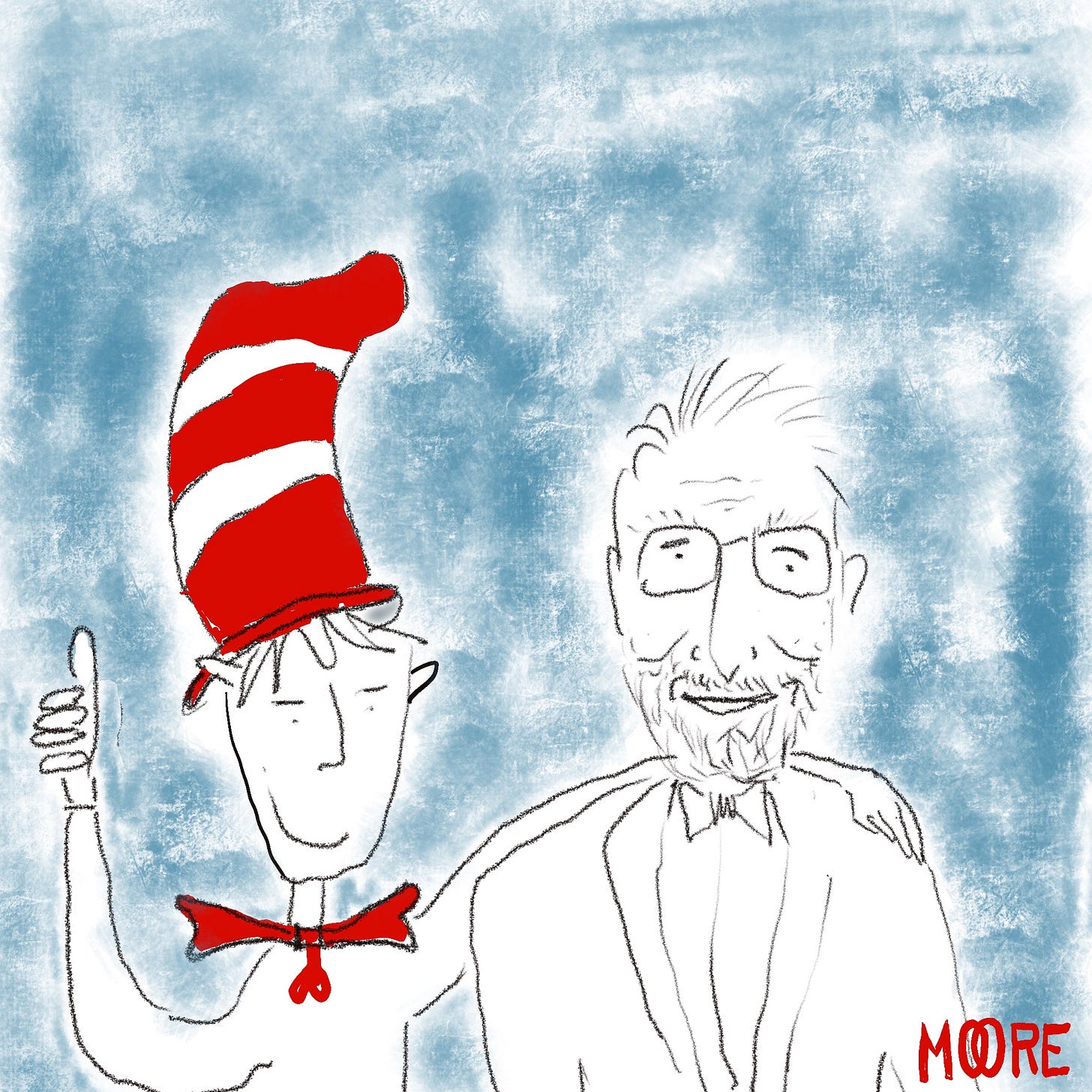How Will You Tell Your Story?
ReWindsDay: Is your personal narrative redemptive, or contaminated? The difference may determine how happy, or the opposite, your life will be.
ON WEDNESDAYS (WHEN I FEEL LIKE IT), I reach into my archives to find an essay, story, or piece of fluff that needs to see the light of day, again. So, welcome to ReWindsDay, where I re-publish pieces even I don’t remember writing.
My publication history on Substack is like the Dr. Seuss story “So Many Daves.” [link below]:
Did I ever tell you that Mrs. McCave
Had twenty-three sons and she named them all Dave?
Well, she did. And that wasn't a smart thing to do.
You see, when she wants one and calls out,
"Yoo-Hoo! Come into the house, Dave!"
She doesn't get one. All twenty-three Daves of hers come on the run!
This makes things quite difficult at the McCaves'
As you can imagine, with so many Daves.
Well, if you swap in me for Mrs. McCave, and “post” or “posts” for “Dave” or “Daves,” you can see my dilemma. Only I have 337 Daves, and I love all of them—each in their own ways. It’s like sniffing your own body odor: So unique! So me!
I called out for Dave #12, and when he arrived, I was surprised that I had created him. Where was my trademark Snarky Artwork™ (or SnarkWork™)?
But hey, I can fix that!
Actually, that’s more sweet than snarky. Sometimes I mis-draw.
Meanwhile, tell me what story you’re dying to tell. Dave will be excited to hear about it.
BECAUSE I’M ALL ABOUT MEMOIR RIGHT NOW, I made the ultimate sacrifice in the name of research, and Googled it. So now you don’t have to.
I discovered that Mel Brooks published a memoir, about his service in World War II, and what it was like to work with Sid Caesar. And it’s just in the nick of time, because Mel is 98 years old. Says the author: “I have always been a huge admirer of my own work. I'm one of the funniest and most entertaining writers I know.”
On the flip side of the comedy coin, there’s Cecily Strong’s memoir This Will All Be Over Soon, about a year in the life after the death of her beloved cousin Owen, who died from brain cancer. Author quote, from her interview with the Washington Post: “It represents my staying alive,” she said. “It really was like a gift to try and figure out how Owen was so positive. It made me examine positivity and optimism in my own life. That actively brought that into my life and really helped me get through a very hard year that is still going on.”
And while I was looking for Strong’s memoir on Bookshop.org, an Amazon competitor run by independent booksellers, I became aware of Vagina Strong, by another Cecily (Alexandria), about her voyage through faith, sex, and life, as a virgin.
I don’t have a vagina, so I downloaded the free excerpt. (Of the book, not the vagina!) And like Mel and that other Cicely, VCicely is trying to work through some stuff: “I’m learning to run fear out of my life,” she writes. Which probably makes a vagina stronger, but I can’t be sure.
One thing all memoirists have in common is that instinct to narrate their lives: to make sense of the story by telling the story. You do it, too, whenever somebody asks “so what do you do,” or, “where were you born?”, or “why did you put on bison horns and invade The Capitol?”
How you answer is who you are, as we’ll see.
There must have been some version of that narrative drive afoot in my own life when, on October 12th, 1978, I opened a blank book given to me as a graduation present, and wrote an account of my day.
“And why not begin with the topic of my immaturity?” I wrote on the first night of the rest of my journal. “Certainly it is one of the major obstacles to be surmounted in the quest of my goals.”
I went on to enumerate the five reasons why I was already a failure:
Self-reproach for craving a literary career.
Failure to distinguish my own writing prospects from those of the scribbling masses.
Too much focus on writing for its own sake, as opposed to vigorously living my life.
You can’t know what will happen, so why are you obsessing?
Self-pity is the opposite/negation of creativity, so look outward already.
Portrait of the artist as a young nincompoop.
Already, I was trying to wrestle my narrative to the ground. Seize that day, and all days that followed, by bullying them into compliance with my daydreams. The waking reality would be different—I turned out to be pretty good at #3, about leading a vigorous life—but I’ve chronicled each day as it has unfolded since then, trying to harvest the good, understand the bad, and keep the momentum going forward—for 15,000 days, so far.
And this is where narrative style comes in.
The concept gained momentum in psychotherapy circles in the early 2000s, when Daniel McAdams published his study The Psychology of Life Stories. He and his research partners invited people into their lab and encouraged them to see their lives in terms of chapters, constructing the narrative, hitting the highlights, drawing the conclusions about how those moments influenced the ones that followed. The New York Times has written about his work here and here.
That’s how the issues of redemptive vs. contaminated narrative came to light. The contaminated camp told life stories that contained the usual amounts of mayhem, compared with those of the redemptive storytellers. Only as Point A led to Point B and eventually off the cliff, the contaminated narrators told their stories to make the point about how their lives spiraled downward. The redemptive group tended to harvest lessons from it, and discern an upward trajectory. Their health outcomes looked up, as well.
The psychologists’ harvest from all of this: The contaminated storytellers were more at risk for depression and addiction, while the redemptive group seemed to rescue themselves through the way they framed their past. The contaminators were looking for the turning points toward grief and chaos and discerning the pattern of decline; the redeemers connected those dots, and tried to make sense of them so that the line might lead someplace better.
So it’s not just that the beloved cousin died of brain cancer, but that he taught us lessons on how to live by dying so well.
It’s not just that you grew up poor and Jewish in Brooklyn, but that you developed your sense of humor to cope, and eventually laughed all the way to Hollywood.
It’s not just that your vagina was there, you could make it stronger by reacting to life’s thrusts and parries, even as a virgin.
And there’s a blank journal page waiting for me tonight, and I’ll tell the narrative of this day, and tomorrow, and tomorrow, and try to make sense of it. Again.
Lighting fools the way to dusty death?
Maybe.
But according to Dr. McAdams, no matter how inevitable dusty death may be, the way you look at that grave-bound procession can impart a glow that illuminates your path forward. It just depends on how high you hold the torch.
So, what’s your narrative style? Redemptive? Or contaminated? You can write the tale however you choose. But, be aware that you’re writing the ending as well.

Wait. You’re not familiar with “Too Many Daves,” by one of my all-time favorite authors? Click here for the whole story, which will last exactly one minute and thirty-four seconds, while Mrs. McCave details what she might have done differently in her life.
Why, oh why, didn’t we name one of our kids Marvin O’Gravel Balloon Face? And now, to quote the Bard of Childhood, it’s too late!
Looking to find more great newsletters where you (probably) found this one? Click this link! You get cool things to read, I get cold hard cash from the guy who runs the Refind.com. Everybody wins!
Many thanks for joining Dr. Seuss and me here on the Road2Elsewhere. May your personal tales be ones of redemption.











Hey WomanofNoImportance! You’re important to me for the gallant act of restacking. Thank you.
I just had a chance to listen to "Too Many Daves." I love it! And yes, Marvin O’Gravel Balloon Face is a wonderful name!